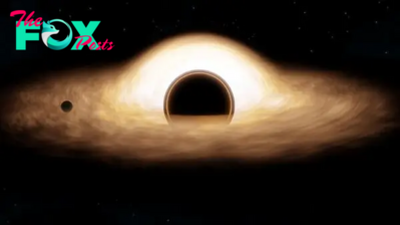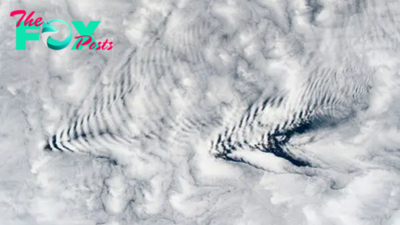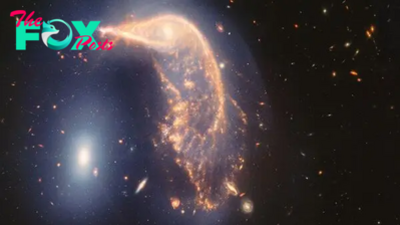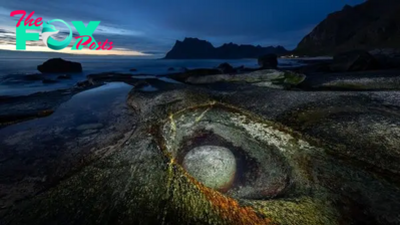Science
James Webb Space Telescope sees an ancient black hole dance with colliding galaxies
Using the James Webb Space Telescope (JWST), astronomers have observed the dramatic "dance" between a supermassive black hole and two satellite galaxies. The observations could help scientists better understand how galaxies and supermassive black holes grew in the early universe.
This particular supermassive black hole is feeding on surrounding matter and powering a bright quasar that is so distant that JWST sees it as it was less than a billion years after the Big Bang. The quasar, designated PJ308-21, is localized to an active galactic nucleus (AGN) in a galaxy that is in the process of merging with two massive satellite galaxies.
Not only did the team determine that the black hole has a mass equivalent to two billion suns, but they also found that both the quasar and the galaxies involved in this merger are highly evolved, a surprise considering they existed when the 13.8-year-old cosmos was just an infant.
The merger of these three galaxies is likely to deliver to the supermassive black hole vast amounts of gas and dust, which will facilitate its growth and allow it to keep powering PJ308-21.
Related: Study finds black holes made from light are impossible — challenging Einstein's theory of relativity
"Our study reveals that both the black holes at the center of high-redshift [early and distant] quasars and the galaxies that host them undergo extremely efficient and tumultuous growth already in the first billion years of cosmic History, aided by the rich galactic environment in which these sources are formed," team leader Roberto Decarli, a researcher at Italy's National Institute for Astrophysics (INAF), said in a statement.
The data was collected in September 2022 by JWST's Near InfraRed Spectrograph (NIRSpec) instrument as part of the 1554 Program, which aims to observe the merger between the galaxy hosting PJ308-21 and two of its satellite galaxies.
-

 Science17h ago
Science17h agoBlack hole growth is slowing down in the universe. New research could help explain why.
-

 Science17h ago
Science17h agoWhat would happen if a black hole wandered into our solar system?
-

 Science22h ago
Science22h agoEarth from space: Gravity waves spark pair of perfect cloud ripples above uninhabited islands
-

 Science1d ago
Science1d agoSpace photo of the week: Warped 'penguin galaxy' spotted by JWST is waddling toward certain doom
-

 Science3d ago
Science3d agoCrew of NASA’s Earthbound Simulated Mars Habitat Emerge After a Year
-

 Science3d ago
Science3d agoMilky Way's rarest black hole may lurk behind 7 stars that 'shouldn't be there'
-

 Science3d ago
Science3d agoLA may be spared 'horrifying' fate of the 'Big One' from San Andreas, simulation suggests
-

 Science3d ago
Science3d agoNorway's Dragon's Eye: The fantastical 'pothole' that emerged from ice 16,000 years ago

















